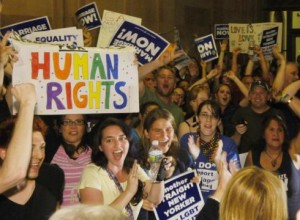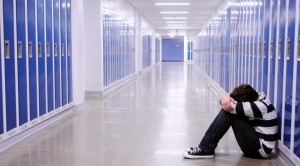Prosecuting human trafficking offenders in the United States is a difficult task at best as public policy does not always support the criminal justice system. Over the past ten years the United States implemented strong public policy measures to address human trafficking and implemented sentencing guidelines to punish traffickers. Prosecution is what I would call the strong arm of the law, or the enforcement behind the law. The only way to deter a group from trafficking is by punishment or prosecution for crimes committed. It is estimated that somewhere between 14,500 and 17,500 people are trafficked into the U.S. every year. Only 103 prosecutions were delivered in the U.S. in 2010, which is extremely low compared to the number of human trafficking incidents that exist.
is what I would call the strong arm of the law, or the enforcement behind the law. The only way to deter a group from trafficking is by punishment or prosecution for crimes committed. It is estimated that somewhere between 14,500 and 17,500 people are trafficked into the U.S. every year. Only 103 prosecutions were delivered in the U.S. in 2010, which is extremely low compared to the number of human trafficking incidents that exist.
To examine prosecution and its ineffectiveness on human trafficking we have to look at the criminal justice system and where that system is flawed. The United States has shown tremendous leadership and growth in developing counter human trafficking  laws, however there are some problems as well. In the U.S. each state is sovereign and has its own court system that is separate from the federal court system. This means that if a perpetrator is convicted for human trafficking in an individual state court that delivers a lower sentence they could serve their time and be released only to commit the crime again. In the U.S. we also have a law called double jeopardy which means that someone cannot be prosecuted for the same crime twice. Someone being prosecuted in state court for human trafficking cannot also be prosecuted in federal court for the same crime.
laws, however there are some problems as well. In the U.S. each state is sovereign and has its own court system that is separate from the federal court system. This means that if a perpetrator is convicted for human trafficking in an individual state court that delivers a lower sentence they could serve their time and be released only to commit the crime again. In the U.S. we also have a law called double jeopardy which means that someone cannot be prosecuted for the same crime twice. Someone being prosecuted in state court for human trafficking cannot also be prosecuted in federal court for the same crime.
No wonder there are so few prosecutions against human traffickers in the United States, there are too many loopholes. To date, there is no mainstreamed process of prosecution with regards to alleged offenders in the U.S. For many decades there has been public policy in just about every state that addresses sex crimes which includes prostitution. Over the past decade many states have also adopted sex trafficking as a crime and have implemented harsh punishments and sentencing guidelines. However, just recently more states have realized that in order to address human trafficking issues in totality they have to implement laws addressing slave labor and domestic servitude as a human trafficking crime. Some states are even beginning to take a look at possible organ harvesting as a human trafficking crime, depending on the circumstances.
It will undoubtedly be a long time before the U.S. has a mainstream one track effort to address human trafficking crimes for prosecution; however most states are on the right track. Through awareness of all aspects of human trafficking public policy can begin to take shape in each state that will allow prosecuting these crimes to become  much easier. Prosecutors can only utilize what the law gives them as tools to pursue justice. Law makers need the public to continue to open their eyes and make them aware of the seriousness of human trafficking and why this issue is imperative to our country’s growth in criminal justice public policy.
much easier. Prosecutors can only utilize what the law gives them as tools to pursue justice. Law makers need the public to continue to open their eyes and make them aware of the seriousness of human trafficking and why this issue is imperative to our country’s growth in criminal justice public policy.
We as U.S. citizens can play a part in shaping public policy by continuing to push for new laws which address human trafficking in our own individual state of residence. It is our responsibility as American citizens to address this issue in our own capacity by creating awareness in our communities, informing our policy makers of possible public policy change, and supporting our criminal justice and legislative systems by voting for positive change. If you would like to do your part you can track human trafficking public policy and legislative activities and get involved by clicking here. Perhaps through a united voice we can all do our part to help change public policy in the United States and give prosecutors the tools they need to punish human trafficking offenders.














